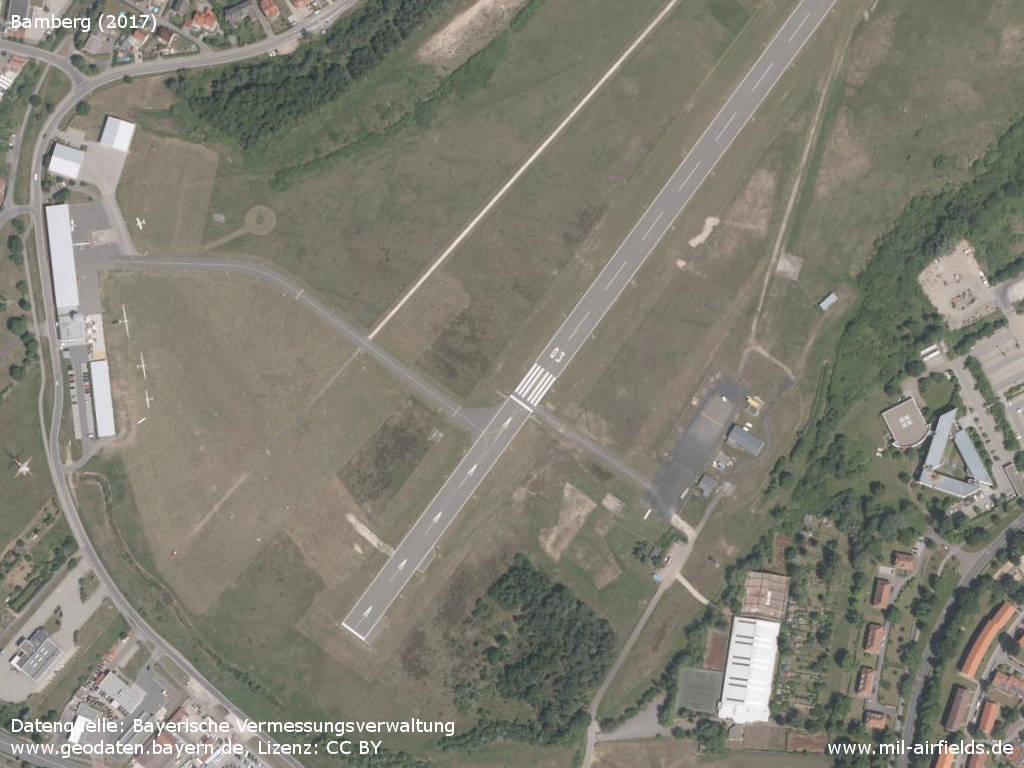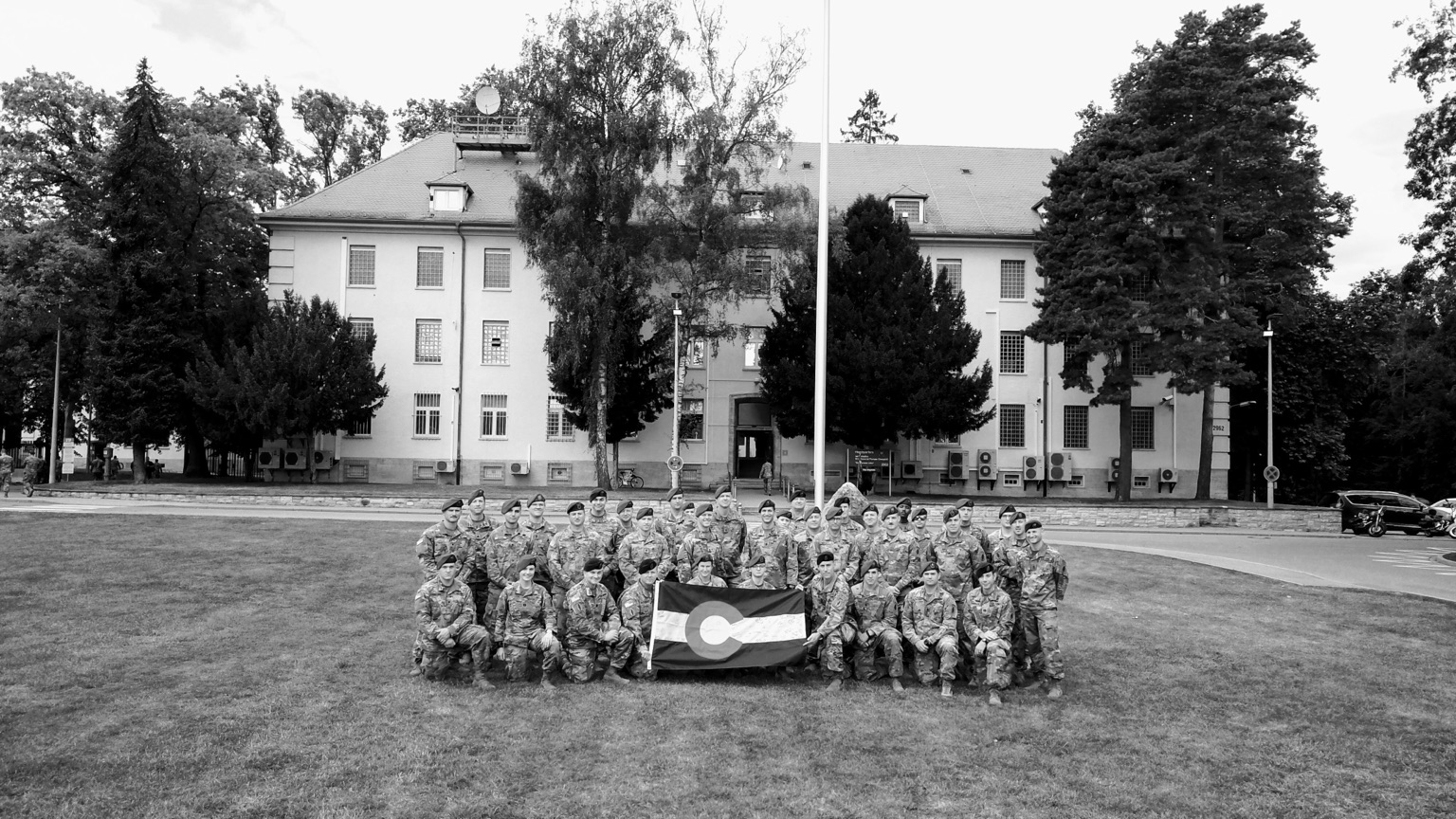Bamberg Army Base Germany - Bamberg. Clear and empty the entire garrison - that is the current order of the US. Garrison Bamberg: clean buildings, load trucks, pack boxes, haul furniture. The recycling center is very busy these days. Soldiers, families and offices of the Bamberg garrison empty out their attics, basements and garages and fill containers to collect metal, plastic and paper. There is a lot of activity in the recycling center.
Helmut Weis coordinates the work at the recycling center. He has been engaged in plumbing since 1981. Over the years, Weis has collected and secured many treasures from Bamberg's military history: photographs, signs, barracks relics. They tell the story of the Bamberg Barracks. Some of these artifacts were displayed in glass cases in his office. They look back to the time when the German Empire was considered "the biggest parade in the world", and Bamberg was part of it. There are "everyday objects" - bottles and padlocks with prints, crockery, horseshoe nails, but also regimental insignia, rusted bayonets and shell casings found during earthworks.
Bamberg Army Base Germany

"We found parts of the uniform of the 5th Royal Bavarian Infantry Regiment from the early days of the Bamberg Infantry Barracks around 1890," says Weis. "In the attics of the stables we have boots, saddle racks and stable equipment from the 17th 35th Tank Regiment of the German Wehrmacht stationed here since 1920."
Warner Barracks In Bamberg, Germany
At times, 1,500 horses were housed at Lagarde Barracks, Weis said. Klaus Graf Schenk von Stauffenberg, who attempted to kill Adolf Hitler on June 20, 1944 ("Operation Valkyrie"), began his military career in the Bamberg 17th Cavalry.
Bamberg Barracks was a military site for 55 years before American soldiers from the 3rd and 45th Infantry Divisions arrived in Bamberg from the south and east on April 13, 1945. After a short fight, a day later, on April 14, they declared the city liberated.
It has been a US installation for over 69 years. With the departure of the soldiers this summer, however, this era will end for Bamberg. For the first time since the 16th century, Bamberg is no longer a garrison town.
Due to its long stay in Bamberg, the 1st Infantry Division, the legendary "Big Red" or "Fighting First", is closely associated with Bamberg. The division was one of the first units on the beaches of Normandy and provided a foothold for the Allies on D-Day, leading to the liberation of Europe. And in the Ardennes offensive in December 1944, on the way to Germany, the 1st ID goes through heavy battles and heavy fighting and has many losses.
Spruce Hills Village Apartments For Rent In Bettendorf, Ia
Henry Warner, a 21-year-old NCO in the 1st ID, had never been to Bamberg. He was killed as a soldier in the division's 26th Infantry Regiment on 21 December 1944 in Bütgenbach near Malmedy, Belgium. Warner almost single-handedly prevented the breakthrough of two German tanks with his anti-tank gun. He then shot the tank commander of the third battle tank from the turret in a gunfight, forcing the tank to retreat. The line of battle remained firm until the next morning. Then the German tanks again approached Warner's position. And he fired again at the burning tank before being killed by two bursts of machine gun fire. On June 23, 1945, the young corporal was posthumously awarded the Medal of Honor, the highest military honor awarded by the US Congress.
Henry Warner's grave is located in Troy, North Carolina. But the Bamberger Post is named in his honor. The complex was named Warner Barracks on June 15, 1950.
An order letter from the US European Headquarters, initiated by the Chief of Staff, Lt. Gen. Clarence R. Hübner, mentions "Tank, LaGarde and Artillery Barracks" in Bamberg - three different barracks. All three make up the Warner Barracks complex. Hübner was the commander of the 1st ID until December 1944.

After the 1st ID was transferred to the USA in 1955, the unit returned to Bamberg in 1990. She fought in the war in Iraq in 1991. From Bamberg, she later supported peacekeeping missions in Bosnia and Herzegovina, Macedonia and Kosovo. Many Bamberg residents still remember the "Big Red Band" with numerous concerts in the center of Bamberg. In 2006, the unit was deactivated at all German installations and reactivated at Fort Riley, Kansas the same year.
Us Military Bases In Germany: A List Of All 12 Bases
Like the United States Constabulary, a highly mobile American police force based in Bamberg from 1946, the 1st ID had security operations in the American sector and secured the border to the Soviet zone. General Dwight D. Eisenhower established a police force (nicknamed the Round C Cowboys because of their yellow, round badge) for police duties throughout the American occupation zone.
They helped establish control among the many war refugees because they did not always fall under German law. The task of the unit was to prevent the spread of smuggling. Weis has pictures of the gendarmerie at military parades on Regnitz and at the foot of Altenburg.
The 1st ID was accompanied by troops from the 10th Infantry Division and the 3rd Infantry Division as well as various logistics, communications and transport units, engineering which was mainly used to clear the ammunition depot in Bamberg (MUNA), soldiers from the 2nd, 3rd and 7 .cavalry regiment, air defense and military intelligence units, artillery units and military police including dog units.
Soldiers served as highly specialized radar technicians and communications specialists, as auto mechanics, cooks, drivers, officers, lawyers, and police officers.
Day Trip To Bamberg, One Of Germany's Unesco World Heritage Sites
Hundreds of thousands of American soldiers have passed through the garrison since 1945. Historian of the USA European Historical Archives, Dr. Andrew Morris, could not give an exact number. "Several hundred thousand," he said, he has been at home in Bamberg for some time.
Bamberg units transported urgently needed goods from seaports to the Berlin Airlift, according to a 2010 US-commissioned documentary. American troops were in Bamberg during the Cuban Missile Crisis and the construction of the Berlin Wall on standby. Their mission was to secure the eastern border with the GDR and Czechoslovakia.
In the 1970s, about 12,000 American troops were stationed in Bamberg, Weis said. There have never been so many of them. The installation was one of the largest employers in the city. At that time, many soldiers were conscripted.
Since the end of the Cold War, the US mission has changed. It adapted to new challenges and restructured. As part of this restructuring, the European headquarters announced in mid-February 2012 that US units would withdraw from Bamberg and that Warner Barracks in Bamberg would be discontinued.
Bamberg, Germany Sunrise Sunset Times
The 16th Maintenance Brigade then moved from Bamberg to Baumholder (Rhineland-Pfalz) in the summer of 2013. Eventually, the paratroopers of the 173rd Airborne Brigade returned to Vicenza, Italy after a stopover in Bamberg. Warner Barracks has not been filled since then, it is quiet in the "American" settlement. The fleet is almost all empty, most of the military equipment has been moved.
Many American soldiers and their families headed to other European American bases or back to the United States. You are the ambassadors of Bamberg. Many of them want to return to their "beautiful Bamberg" as tourists.
"Every American I talk to is sad to leave Bamberg," Weis said. - Nobody likes to leave. The two remaining companies of the 54th Engineer Battalion reported their companies in the spring of 2014. The 630th Military Police Company was the last unit to leave Bamberg.
On September 12, the garrison flag will fly for the last time over Warner Barracks. The tradition that goes back to the 16th century, Bamberg was a garrison town, then comes to an end. Warner Barracks was a US Army military base in the city of Bamberg, Bavaria, southern Germany. The base has been occupied by American forces since the end of World War II. On April 13 and 14, 1945, soldiers of the US Army's 3rd Infantry Division and 45th Infantry Division captured the city. Before the war, however, this military site had a turbulent history that goes hand in hand with that of Bamberg, which began in the culture of the 10th century. Bamberg was originally a hilltop fortress. The view allowed the soldiers of that time to observe the city and protect it from possible attacks. In 973, the Duke of Bavaria took control of the fortress. The town and the fort fell under the control of the Swedish Protestants during the Thirty Years' War when the Swedes stormed the town and took it by force in 1634.
Warner Barracks Hi Res Stock Photography And Images
In 1891 Warner Kaserne, later known as "Lagarde Kaserne", was built by the Royal Bavarian Army as an infantry barracks. Many of the buildings in the west were built at the beginning of the 20th century, and some of them are classified as historical monuments. From the First World War to the Second World War, almost every branch of the Germans
Wildflecken germany army base, bamberg army base, pirmasens germany army base, bamberg germany army, aschaffenburg germany army base, bamberg germany military base, bamberg germany army base, us army bamberg germany, us army base bamberg germany, mannheim germany army base, sembach germany army base, bamberg germany army base housing

0 Comments